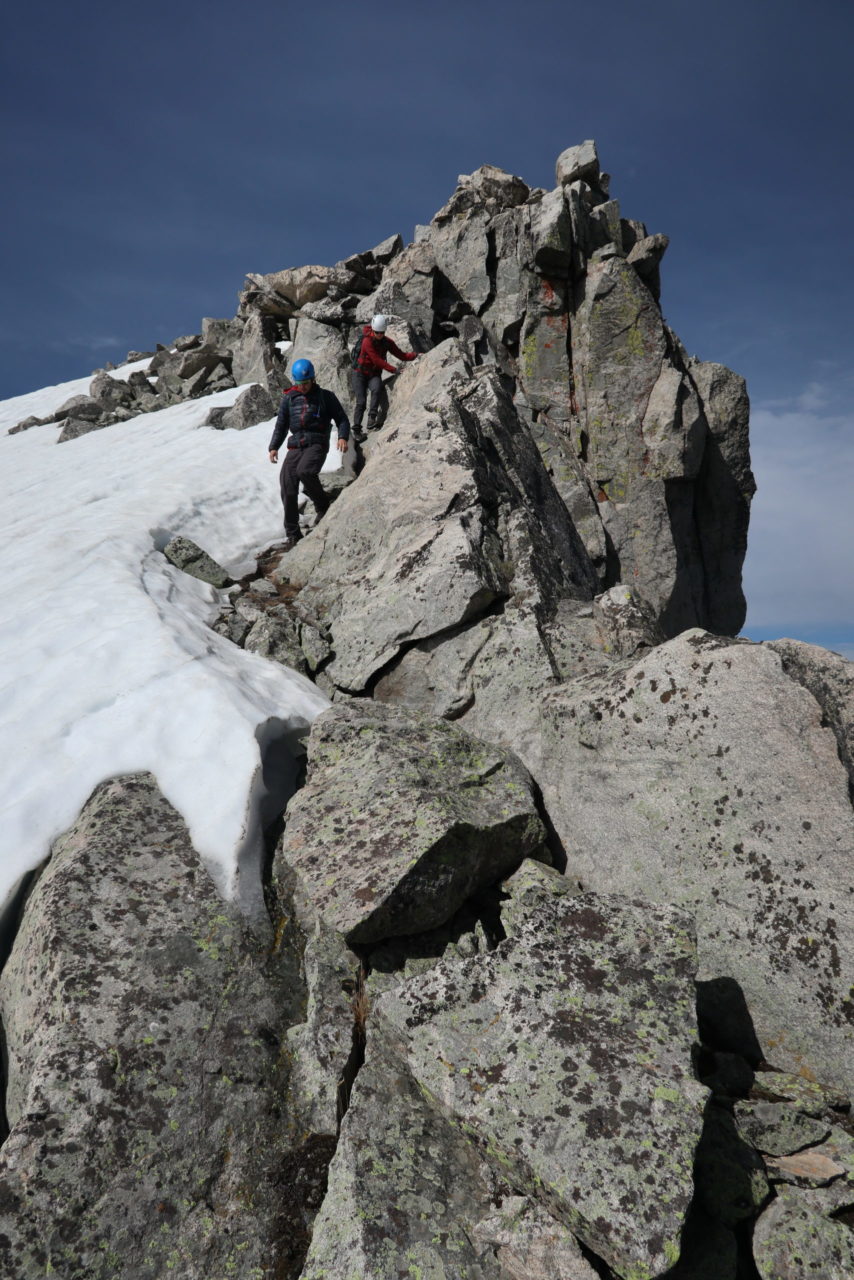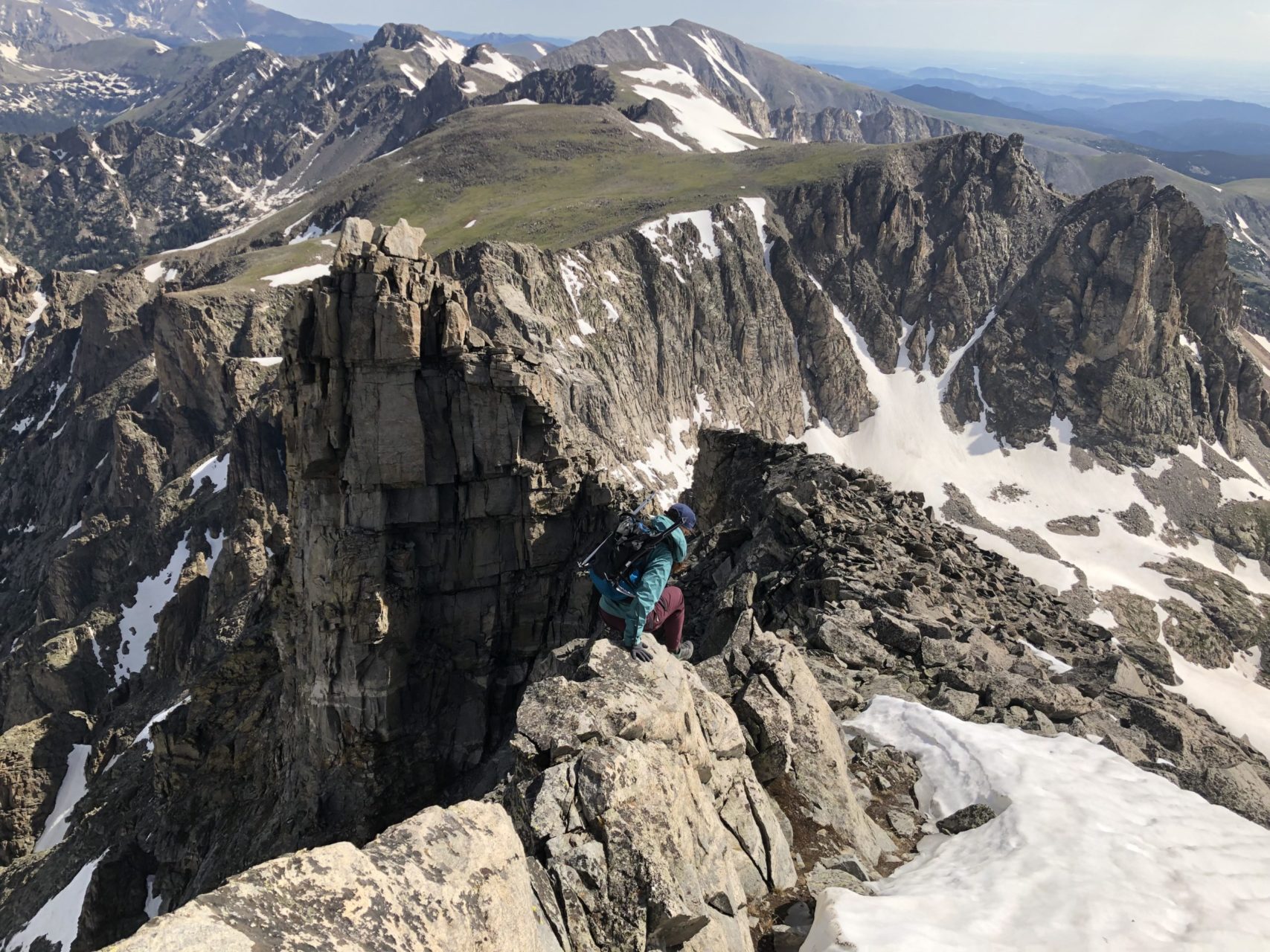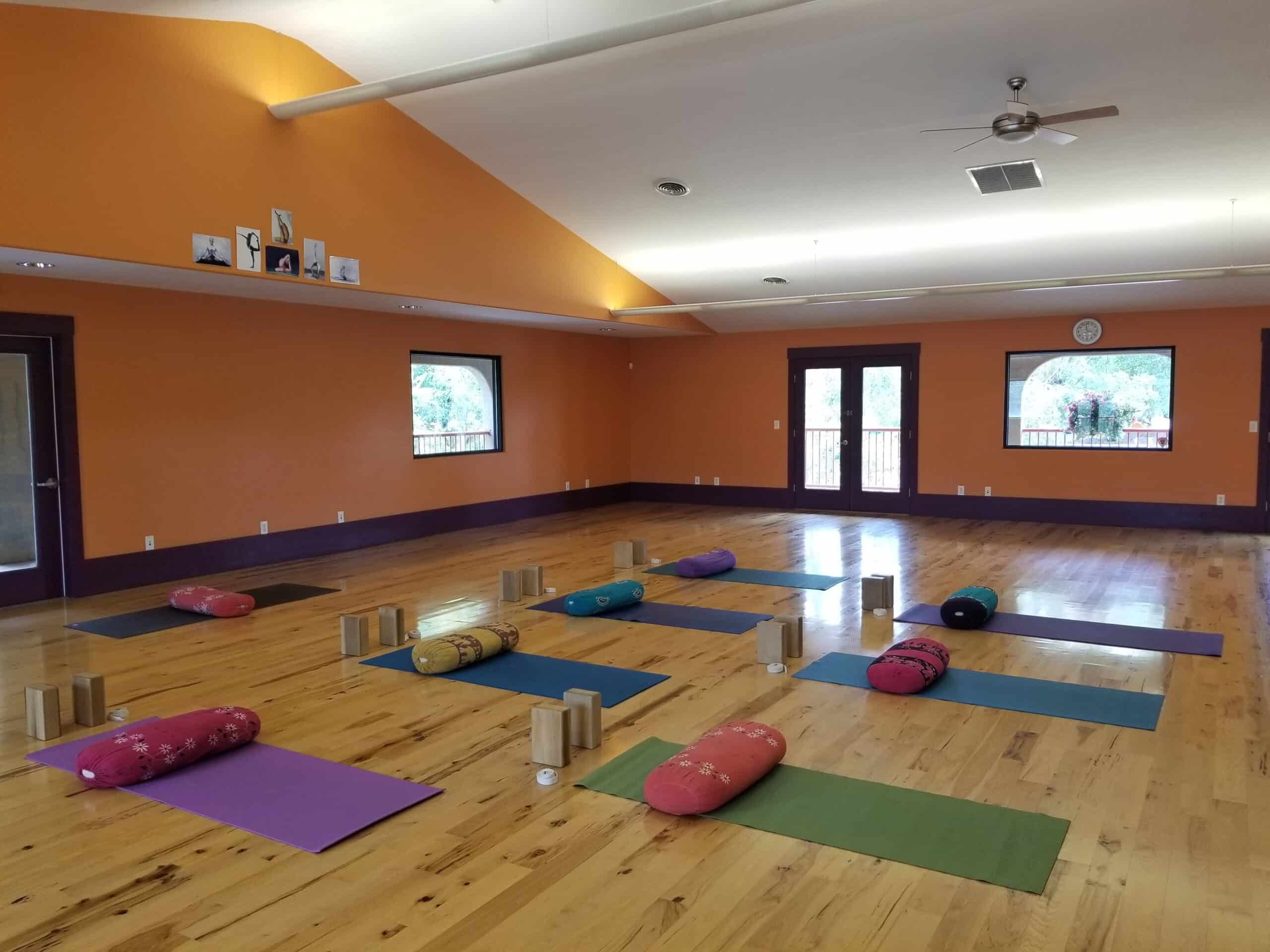Echoes of Time : Colorado’s 14 Named Glaciers Are Melting at Unprecedented Rates | By Emma Athena
Originally published in the Winter + Spring 2020 issue.
The trail approaching the Apache Couloir is long and mostly flat. Climbing up couloirs — or, hard-packed snow chutes that line the sides of mountains and ridgelines, compressed by time and stormy winds — is dangerous, unless optimal conditions are present: it’s cold and there is no new snowfall. That loosely means the danger of avalanches is low.
I’d woken up at 2:45 a.m. that morning to get moving on the trail early. Hours later, once I reached the base of Apache Peak, from which its namesake couloir rises, I sat on an exposed rock and laced up my crampons — sharp metal claws you strap to your shoe bottoms to bite into the icy snow. I untethered my ice axe from my backpack, weighing its light, aluminum chill.
Looking up at the couloir, angling toward the sky about 45 degrees, I took a deep breath. At this point, it was just past dawn. It was certainly cold. The snow was still stiff to the touch.
Apache Peak, one of the rocky summits tucked in the back of the Brainard Lake Recreation Area, rises above 13,400 feet as the second-highest mountain in Colorado’s Indian Peaks Wilderness. Connected by a scraggly ridgeline to a series of other 12- and 13,000-foot peaks both left and right, Apache is the centerpiece of a half-moon rim that towers over a high-alpine basin, filled with wildflowers, waterfalls and a glacier. Long ago, before Anglo settlers took over the region in the mid-1800s, members of the Arapaho tribe lived and hunted wild sheep and caught fish here during the summer months.
The first time I tried to climb the Apache Couloir, the conditions were terrible. My boyfriend, Jordan, and I made the long trek past Brainard Lake, past Long Lake, past the waterfalls, past Lake Isabelle, past the young green hues coloring the sparse aspens. It was late spring, the beginning of couloir climbing season. Once we crawled up into the basin, Apache Peak and its comrades standing tall above us, the sun was already too-high in the sky. Winter 2018’s skimpy snowpack was soft, slushy. Ascending the east-facing couloir would be too dangerous.
We decided to climb a safer, less-steep couloir on the north side of the alpine bowl. From a perch a few hundred feet up this snow slope, you could see Apache in its entirety, proud in its prominence, its permanence. The couloir tops out on the peak’s south-eastern ridge and, like a tendril of braided hair, curves down the eastern face. To the right of Apache’s base, I noticed a wide snowfield rising half-way up the rock wall that connects Apache to Shoshoni peak.
I pointed out the giant snow deposit, or what I thought was a giant snow deposit, to Jordan: “What’s that?”
Nearly blinding, cradled in this mountain nook, the snow glistened in the late morning light. Jordan didn’t know. I took a last look at it before glissading down the couloir before us, sliding, gaining speed like a backcountry roller coaster.
Back at home I pulled up a map and looked around the area, identifying Apache then Shoshoni. Isabelle Glacier sat between them. I learned that day there are 14 named glaciers in Colorado, nearly all of them in or surrounding Rocky Mountain National Park. The Indian Peaks Wilderness, which abuts the Park’s southern border, contains four.
Isabelle Glacier formed during the Little Ice Age, around 700 years ago. At the time, scores of new glaciers accumulated across the state, according to a U.S. Geological Survey. Now, in 2019, after decades of global warming, all that remains is a handful of tattered patches. Isabelle Glacier likely once covered the entire alpine basin sprawling below Apache and Shoshoni. Today, it’s shriveled a fraction of the space, roughly the size of five football fields. Some scientists estimate most Rocky Mountain glaciers will be gone by 2030.
When glaciers melt, the surrounding environments suffer: once-frozen land destabilizes, erosion occurs, methane gas is released, flora and fauna often resettle, fresh water is depleted. The waterfalls, wildflowers, wild elk and moose will slowly evacuate. Suddenly I wanted nothing more than to go back to that basin, to see Isabelle Glacier from all sides, to observe the icy landscape before time disappeared it away.

The author traversing the ridge of Apache Peak.
The second time I tried to climb the Apache Couloir, the conditions again were terrible. Jordan and I drove into Brainard Lake Recreation Area underneath thick gray clouds. By the time we parked, snowy white-out conditions surrounded us. We hiked two miles in before turning around. We couldn’t see more than 50 feet in front of us.
It was my third attempt, a few weeks later with two friends, that got me all the way to Apache’s base on that crisp morning with stiff snow. Perfect conditions. My crampons strapped tight and my ice axe at hand, I kick-stepped up the couloir, making a long zig-zagging path up the slope. Kick — tssk — kick — tssk — ice axe — zzph. Kick, kick, ice axe. Kick, kick, ice axe.
This was our rhythm, my breath. The alpine bowl echoed us across the silent morning — tssk, tssk, zzph: our song, in harmony.
I know some music is timeless, but as I neared the summit, our harmony grew somber. This was an endangered melody. Standing on Apache Peak’s highest point, I looked down at the remains of Isabelle Glacier, pure white under a blue-bird sky, and I bowed my head, thinking of the Arapaho peoples gathering the fruits of its fresh water, the elk siphoning its nutrients, the waterfalls down below.
We traversed the ridge north, to the top of another couloir, Queen’s Way, which curves down Apache’s northeastern slope. I sat down atop the snow chute and slid all the way down so fast my legs burned from the snow, my heart giddy, my face pressed into a childish grin. I slowed to a stop as Queen’s Way came to an end, blending into Isabelle Glacier. I laid my head down, resting on her chilly surface. My heart beat like a winter storm against the glassy snow. She echoed back, boom boom, too.
Photo by Noah Webb.
 Emma Athena is an award-winning journalist and mountain lover. She currently lives in Boulder, Colorado, where you can find her running dirt paths or scaling vertical rock when she’s not behind a keyboard or curled up with a book. To peruse her other work — fiction, nonfiction and otherwise — visit her website: emmaathenamurray.com.
Emma Athena is an award-winning journalist and mountain lover. She currently lives in Boulder, Colorado, where you can find her running dirt paths or scaling vertical rock when she’s not behind a keyboard or curled up with a book. To peruse her other work — fiction, nonfiction and otherwise — visit her website: emmaathenamurray.com.Introducing the Botanica beeswax jar candles, a pure concoction of raw beeswax and essential oils, no more, [...]

Subscribe to Our Tribe
Stay up to date with Y+L News, Events and special announcements.










